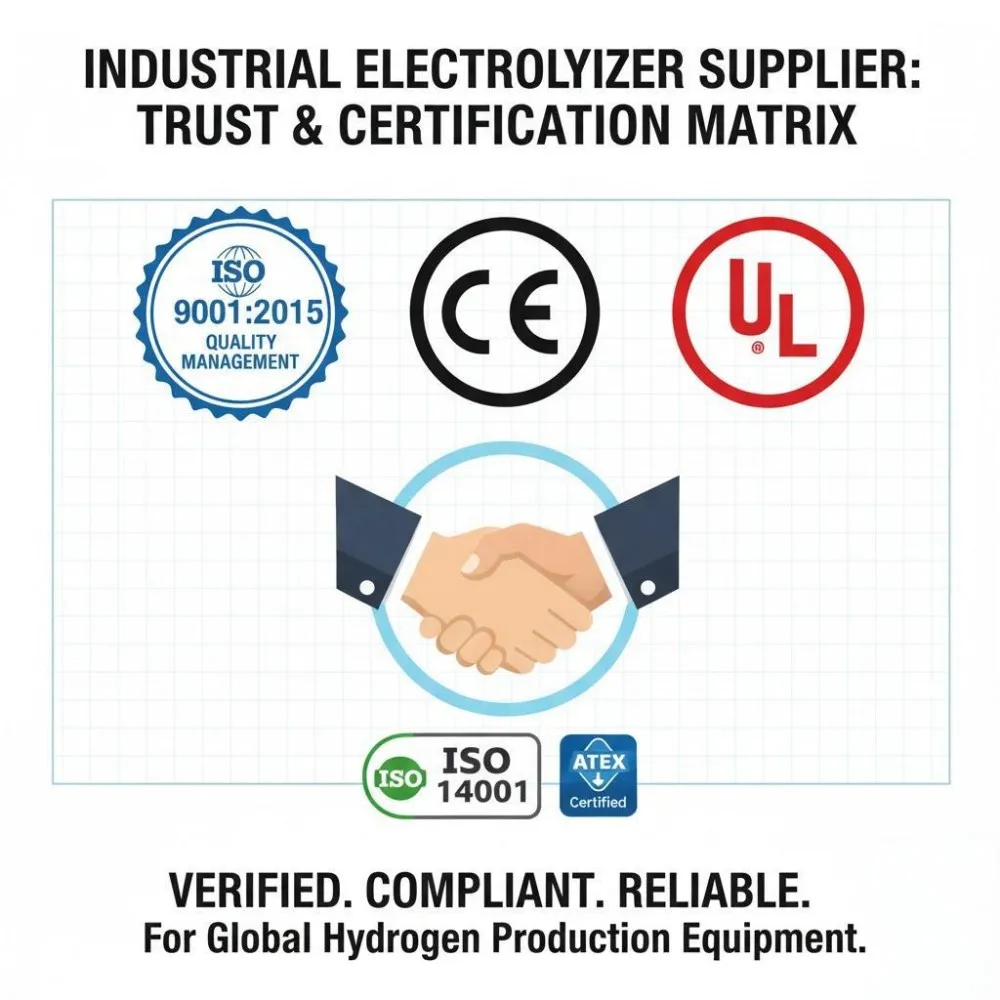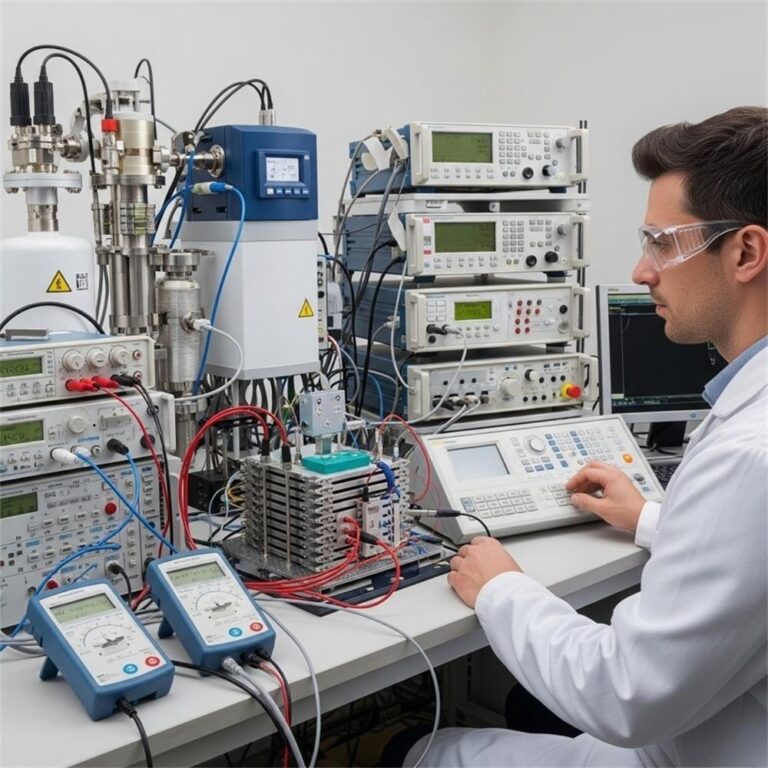Discover how 10KW industrial hydrogen generators can enhance manufacturing efficiency. Learn about specifications, integration, and benefits for your business. Contact us for a quote.
I. Introduction: The Rise of On-Site Hydrogen Generation in Manufacturing
As global industries embrace cleaner energy sources, on-site hydrogen generation has emerged as a game-changer for modern manufacturing. Industrial sectors once reliant on centralized hydrogen deliveries now look to localized solutions to meet sustainability goals and reduce operational costs.
Hydrogen is no longer confined to oil refineries or large-scale chemical plants. Thanks to technological advancements, compact and efficient 10KW hydrogen generators can now be installed within small to medium-scale factories, powering operations without the logistical challenges of bulk hydrogen transport.
These generators offer several key benefits:
- Cost Efficiency: By eliminating delivery and cylinder rental fees, companies can drastically cut fuel expenses.
- Energy Reliability: In-house production reduces downtime linked to delayed hydrogen deliveries.
- Lower Carbon Footprint: When powered by renewable electricity, on-site hydrogen generation becomes an ultra-clean energy solution.
The 10KW capacity strikes a strategic balance—large enough to fuel demanding processes, yet compact and flexible enough to integrate into existing systems.
II. Understanding the Applications: Industrial Uses for a 10KW Hydrogen Generator
A. Specific Industrial Processes
Hydrogen plays a crucial role across multiple manufacturing domains. Here’s how a 10KW hydrogen generator fits seamlessly into these applications:
- Metal Treatment
- Used in annealing, brazing, and hardening, hydrogen creates a reducing atmosphere that prevents oxidation during heat treatment.
- A steady supply of high-purity hydrogen ensures uniformity and quality in metallurgical outputs.
- Electronics Manufacturing
- Semiconductors and microelectronic components require ultra-pure hydrogen for surface cleaning and wafer processing.
- On-site generation ensures the high consistency needed for precision-driven industries.
- Chemical Processing
- From ammonia synthesis to hydrogenation reactions, the chemical sector relies on hydrogen for a myriad of processes.
- 10KW generators are ideal for pilot plants, pharmaceutical production, and specialty chemicals.
- Food Processing
- Used in the hydrogenation of oils and fats, hydrogen improves product stability and shelf life.
- The reliability of a 10KW generator supports uninterrupted food production cycles.
B. Why 10KW Capacity?
A 10KW hydrogen generator is engineered to meet the needs of small to medium-sized operations, offering several distinct advantages:
| Capacity | Ideal Use Case | Benefits |
|---|---|---|
| 10KW | Single production lines, pilot plants, R&D labs | Compact, efficient, easy to install |
| >30KW | Large-scale, centralized facilities | Higher output but costlier and less flexible |
This sweet spot enables industries to optimize fuel use, avoid overcapacity, and achieve faster ROI—especially for production lines that don’t require megawatt-scale hydrogen outputs.
III. Key Specifications of a 10KW Industrial Hydrogen Generator
A. Electrolysis Technology
Modern hydrogen generators typically use electrolysis—splitting water into hydrogen and oxygen using electricity. Three main technologies dominate:
- PEM (Proton Exchange Membrane)
- Benefits: High-purity hydrogen (up to 99.999%), fast response times, and compact design.
- Best For: Precision applications like electronics and medical device manufacturing.
- Alkaline Electrolysis
- Benefits: Low-cost setup, proven durability.
- Best For: General manufacturing and metal processing.
- AEM (Anion Exchange Membrane)
- Benefits: Combines PEM’s purity with alkaline’s cost-efficiency.
- Best For: Innovative companies seeking balance between performance and cost.
B. Hydrogen Purity and Pressure
High-quality 10KW systems typically deliver hydrogen at 99.999% purity, with configurable output pressures ranging from 5 to 30 bar, suitable for various industrial tools and reactors.
C. Safety Features
Industrial hydrogen systems prioritize operator safety through:
- Integrated leak detectors
- Automatic shutdowns in case of anomalies
- Certifications such as CE, UL, and ISO
D. Size and Footprint
Most 10KW units are modular, measuring approximately 1.2m x 1m x 1.8m, and can be placed in ventilated indoor spaces or weatherproof outdoor enclosures, depending on site layout.
IV. Seamless Integration with Existing Production Systems
A. Integration Points
To ensure operational harmony, a 10KW generator can connect directly to:
- Gas supply manifolds or buffer tanks
- Process equipment needing direct hydrogen feed
- PLC or SCADA control systems for remote monitoring
B. Installation Considerations
A typical setup involves:
- Adequate ventilation
- Stable power supply (typically 380-480V, 3-phase)
- Compliance with local safety regulations
Engineers conduct site assessments to customize installation for optimal flow and pressure control.
C. Case Studies
- Metalworking Plant (Germany): Installed a 10KW PEM generator, reducing hydrogen procurement costs by 35%.
- Semiconductor Fabrication Lab (Singapore): Achieved ultra-pure hydrogen supply in-house with automated pressure regulation and remote diagnostics.
V. Efficiency and Performance Metrics: Understanding the ROI
A. Energy Consumption
Modern 10KW generators consume approximately 50–55 kWh per kilogram of hydrogen produced, depending on technology and ambient conditions.
B. Hydrogen Production Rate
At 10KW, expect an output of about 2 Nm³/hour of hydrogen—sufficient for most targeted applications.
C. Cost Analysis
| Source | Cost per kg of Hydrogen |
|---|---|
| On-site Electrolysis | ~$4–6 |
| Delivered Cylinders | ~$10–15 |
| Liquid Hydrogen | ~$12–20 |
With proper setup, businesses often recoup investment within 2–4 years, depending on electricity pricing and hydrogen demand.
D. Environmental Impact
Compared to steam methane reforming (SMR), on-site hydrogen from electrolysis can reduce CO₂ emissions by over 90%, especially when powered by solar or wind.
VI. Maintenance Protocols and Long-Term Reliability
A. Routine Maintenance
Routine care includes:
- Monthly inspections
- Filter and electrolyte checks
- Software updates and sensor calibrations
B. Troubleshooting
Common issues (e.g., flow inconsistencies, sensor alarms) are usually resolved via diagnostics software or remote support tools.
C. Service and Support
Reputable manufacturers offer:
- 24/7 remote monitoring
- Annual service contracts
- Local spare part inventory
D. Lifespan
A well-maintained 10KW generator can last 15–20 years, with membrane stacks requiring replacement every 5–7 years, depending on usage.
VII. Conclusion: Embracing On-Site Hydrogen Generation for a Sustainable Future
As industries aim to reduce emissions, cut costs, and streamline operations, the 10KW industrial hydrogen generator offers a smart, scalable solution. Whether it’s a metal shop, electronics lab, or food processing plant, these systems deliver measurable gains in efficiency and reliability.
Ready to enhance your manufacturing efficiency with a 10KW industrial hydrogen generator?
👉 Contact us today for a free consultation and quote. Discover how our hydrogen solutions can transform your production processes. [Link to Contact/Quote Form]
FAQs About 10KW Industrial Hydrogen Generators
1. What is the hydrogen output of a 10KW generator? Approximately 2 Nm³/hour, depending on technology and system configuration.
2. Can I use renewable energy to power the generator? Yes. These systems are fully compatible with solar and wind power, enhancing sustainability.
3. How pure is the hydrogen produced? Typically, up to 99.999% purity, suitable for most industrial and laboratory applications.
4. Is the generator safe to use indoors? Yes, with proper ventilation and safety measures in place (leak detectors, auto-shutdown systems).
5. What maintenance is required? Periodic checks of filters, electrolytes, and software updates—usually every 1–3 months.
6. How long does installation take? Depending on site readiness, full installation can be completed within 2–4 weeks.







